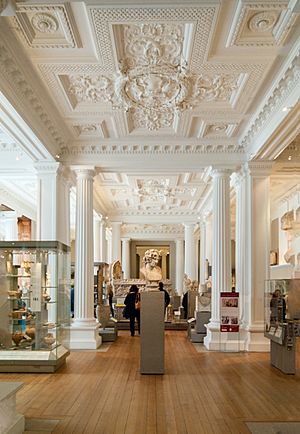Fitzwilliam Museum facts for kids
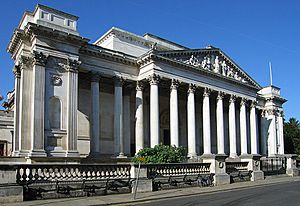
The primary entrance to the Fitzwilliam Museum
|
|
| Lua error in Module:Location_map at line 420: attempt to index field 'wikibase' (a nil value). | |
| Established | 1816, by Richard FitzWilliam, 7th Viscount FitzWilliam |
|---|---|
| Location | Cambridge, England |
| Type | University Museum of fine art and antiquities |
| Collection size | approx. 600,000 |
| Visitors | 349,484 (2019) |
| University of Cambridge Museums | |
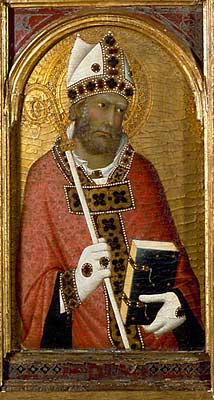
The Fitzwilliam Museum is a fantastic art and history museum in Cambridge, England. It's part of the University of Cambridge. You can find it on Trumpington Street, right in the center of the city.
The museum was started in 1816 by a man named Richard FitzWilliam, 7th Viscount FitzWilliam. He left his amazing art collection and a lot of money to create it. Today, the Fitzwilliam Museum has one of the best collections of ancient treasures and modern art in Europe.
With over 500,000 items, the museum helps you explore world history and art. You can see famous artworks by Monet, Picasso, Rubens, Vincent van Gogh, and Rembrandt. There's also a cool stone carving with wings from an ancient city called Nimrud. The best part? It's always free to visit!
The Fitzwilliam Museum is also part of a group called the University of Cambridge Museums. This group works together to make museums even better.
Contents
How the Museum Started and Its Buildings
The museum began in 1816 thanks to Richard FitzWilliam, 7th Viscount FitzWilliam. He left his huge library and art collection to the university. He also gave £100,000 to build a strong, new museum.
The Fitzwilliam now holds over 500,000 items. It is known as one of the best museums in the United Kingdom. At first, the collection was kept in the Perse School building. In 1842, it moved to the Old Schools in central Cambridge.
The main building, called the "Founder's Building," was built between 1837 and 1843. George Basevi designed it, and C. R. Cockerell finished the work. The beautiful carvings and lion statues were made by William Grinsell Nicholl. The museum officially opened its doors in 1848.
The grand entrance hall was completed in 1875 by Edward Middleton Barry. In 1912, Charles Brinsley Marlay gave the museum even more. He donated £80,000 and 84 paintings. A big new section was added in 1931, making the museum much larger. This new space also allowed researchers to study the collections.
The museum buildings are very important historical sites.
What You Can See: The Collections
The museum has five main sections, each with amazing things to see:
- Antiquities: This section has ancient items from ancient Egypt, Nubia, Greece, and Rome. You can also see art from Cyprus.
- Applied Arts: Here you'll find pottery, glass, furniture, clocks, and armor from Europe and Asia. There's also art from China, Japan, and Korea.
- Coins and Medals: A collection of old coins and medals.
- Rare Manuscripts and Printed Books: This section holds old handwritten books, music, and rare printed books.
- Paintings, Drawings, and Prints: This is where you'll find famous paintings and drawings.
Some special items include a stone carving from Persepolis. There's also a huge statue from Eleusis called the Saint Demetra.
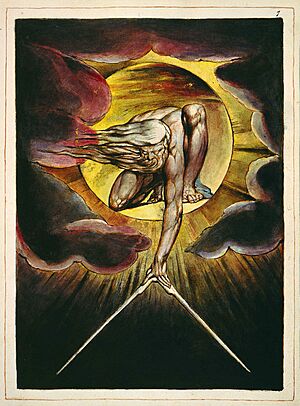
Old Music Books
The museum has the largest collection of 16th-century music for a keyboard instrument called the virginal. These books were written by famous composers like William Byrd and Thomas Tallis.
Ancient Egypt Gallery
The Egyptian Galleries are very popular at the Fitzwilliam Museum. They reopened in 2006 after a big update. This update cost £1.5 million and helped preserve the items. It also allowed more ancient treasures to be shown to the public.
These galleries let families and young visitors learn about ancient Egypt. You can explore the history and landscape through fun, hands-on exhibits. The Fitzwilliam's Egyptian Galleries have some of the best displays of Egyptian items outside of the British Museum.
Amazing Paintings
The museum has a huge collection of paintings and sketches. You can see works by Monet, Picasso, Rubens, Vincent van Gogh, Cézanne, and Rembrandt.
There are also many works by J. M. W. Turner. These started with 25 watercolor drawings given to the university in 1861. Later, the museum's director bought even more of Turner's watercolors.
The museum also has a painting called The Last of England by Ford Madox Brown. In 2005, people voted it the eighth-greatest painting in Britain!
Many paintings in the museum are on loan from other colleges at University of Cambridge. For example, King's College owns some important Impressionist paintings. These include Cézanne's The Abduction. Many artworks were also given by people who studied at or supported the university. For instance, the economist Maynard Keynes donated his personal collection.
- Artists from England and America
- John Constable – 12 paintings
- J. M. W. Turner – 1 painting
- Dutch Artists
- Frans Hals – 1 painting
- Rembrandt – 1 painting
- Vincent van Gogh – 1 painting
- English Artists

- William Blake – 4 paintings, plus many drawings and writings
- Thomas Gainsborough – 8 paintings
- William Hogarth – 9 paintings
- Joshua Reynolds – 4 paintings
- Flemish Artists
- Peter Paul Rubens – 14 paintings
- Anthony van Dyck – 5 paintings
- French Artists
- Edgar Degas – 7 paintings
- Claude Monet – 4 paintings
- Pierre-Auguste Renoir – 11 paintings
- Georges-Pierre Seurat – 1 painting
- German Artists
- Hans Holbein the Younger – 2 paintings
- Italian Artists
- Canaletto – 6 paintings
- Andrea Mantegna – 9 large paintings called Triumphs of Caesar
- Raphael – 8 paintings
- Titian – 4 paintings
- Paolo Veronese – 3 paintings
Michelangelo's Bronze Statues?
In 2015, the museum showed two bronze statues called the Rothschild Bronzes. Many experts believe these might be the only bronze sculptures ever made by the famous Italian artist Michelangelo. The statues show naked men riding panthers. An art historian found a drawing by one of Michelangelo's students that looks very similar.
Museum Events and Stories
On January 25, 2006, a visitor accidentally broke three large vases from the Qing Dynasty. These vases had been on display since 1948. Experts at the museum worked hard to put the pieces back together. They were able to restore the vases, which are now protected by strong glass.
On April 13, 2012, a group of burglars stole 18 pieces of Chinese jade. The thieves were caught and sent to jail. However, some of the most valuable jade pieces were never found. It's thought they might have been sold to China. The stolen items were worth a lot of money, making it one of the biggest art thefts in UK history.
Friends of the Fitzwilliam Museum
The Friends of the Fitzwilliam Museum group started in 1909. It's the oldest group in Britain dedicated to supporting a museum for a long time. The "Friends" have helped raise money to buy important artworks. They also help expand and improve the museum buildings.
Currently, the Friends are working to buy new modern art. They also want to create a special fund to help the museum stay great for many years to come.
Princess Alexandra is the president of the Fitzwilliam Museum Development Trust.
Museum Leaders (Directors)
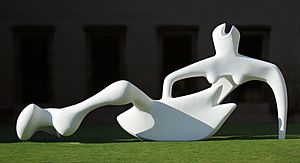
Here are some of the people who have led the museum:
- Sidney Colvin 1876–1884
- Sir Charles Walston 1883–1889
- John Henry Middleton 1889–1892
- Montague Rhodes James 1893–1908
- Sir Sydney Cockerell 1908–1937
- Louis Clarke 1937–1946
- Carl Winter 1946–1966
- Sir David Piper 1966–1973
- Professor Michael Jaffé 1973–1990
- Simon Swynfen Jervis 1990–1995
- Duncan Robinson 1995–2007
- Timothy Potts 2007–2012
- Tim Knox 2012––2018
- Luke Syson 2019–
More to Explore
- Ashmolean Museum — a similar museum at the University of Oxford
- British Museum — a big partner for research and exhibitions
- Hamilton Kerr Institute — a part of the Fitzwilliam Museum that studies and cares for paintings
See also
 In Spanish: Museo Fitzwilliam para niños
In Spanish: Museo Fitzwilliam para niños



